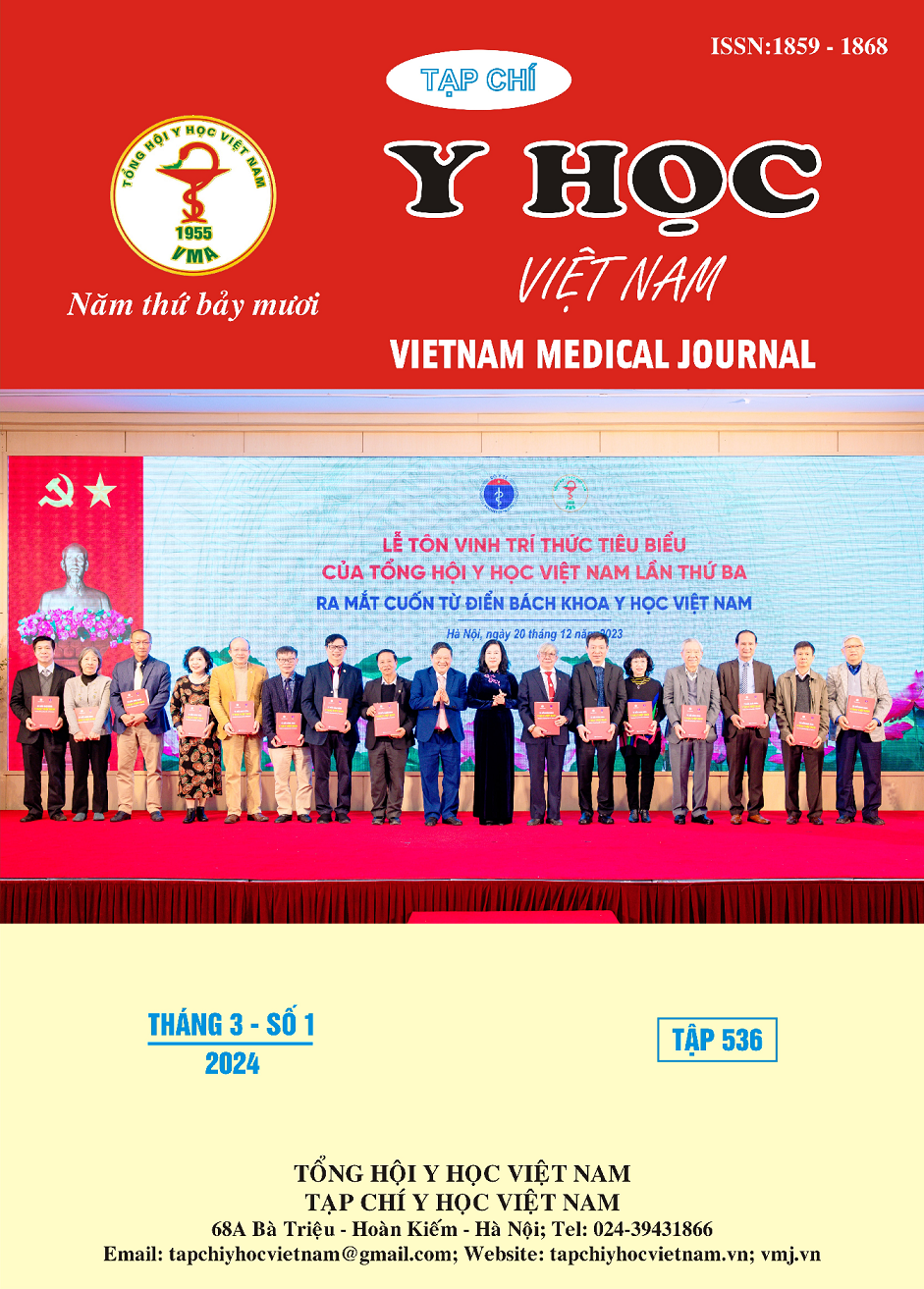GIÁ TRỊ CỦA CÁC PHƯƠNG PHÁP NỘI SOI, CHỤP XQUANG BARYT THỰC QUẢN, ĐO ÁP LỰC VÀ NHU ĐỘNG THỰC QUẢN ĐỘ PHÂN GIẢI CAO TRONG CHẨN ĐOÁN CO THẮT TÂM VỊ
Nội dung chính của bài viết
Tóm tắt
Nghiên cứu cắt ngang thực hiện trên 148 bệnh nhân nghi ngờ co thắt tâm vị (CTTV) từ 9/2020 đến 2/2023 tại Viện nghiên cứu và đào tạo tiêu hóa gan mật. Tuổi trung bình là 41,5 ± 14,8 với 37,9% là nam giới. Triệu chứng lâm sàng thường gặp nhất là nuốt khó (85,1%) và trào ngược (75,7%), tỷ lệ bệnh nhân có điểm Eckardt ≥6 là 60,0%. Trong 148 bệnh nhân, 140 bệnh nhân được chẩn đoán xác định bởi bác sĩ lâm sàng dựa vào triệu chứng kết hợp các phương pháp thăm dò hình ảnh (nội soi/chụp baryt thực quản/ đo áp lực và nhu động thực quản độ phân giải cao (HRM)). 81,8% bệnh nhân có hình ảnh CTTV trên nội soi với độ nhạy 82%, nhưng độ đặc hiệu chưa cao (57%). Kỹ thuật HRM cho thấy độ nhạy tốt hơn trong chẩn đoán CTTV so với các phương pháp truyền thống như chụp baryt thực quản và nội soi đường tiêu hóa (độ nhạy 87%, độ đặc hiệu 100%). Kết hợp các phương pháp chẩn đoán CTTV với triệu chứng lâm sàng sẽ giúp cải thiện độ đặc hiệu trong chẩn đoán.
Chi tiết bài viết
Tài liệu tham khảo
2. Vaezi, M.F., et al., ACG Clinical Guidelines: Diagnosis and Management of Achalasia. Am J Gastroenterol, 2020. 115(9): p. 1393-1411.
3. Việt Hằng Đào, B.L., & Văn Long Đào., “Bước đầu đánh giá kết quả chẩn đoán và phân loại co thắt tâm vị bằng kỹ thuật đo áp lực và nhu động thực quản độ phân giải cao. Journal of 108 - Clinical Medicine and Phamarcy, 2019. 14(3).
4. Thuy, L.N., et al., Evaluation of clinical characteristics and lower esophageal sphincter pressure on high resolution manometry in achalasia patients after treatment. Vietnam Journal of Science, Technology and Engineering, 2021. 63(1): p. 42-46.
5. Kahrilas, P.J., et al., The Chicago Classification of esophageal motility disorders, v3.0. Neurogastroenterol Motil, 2015. 27(2): p. 160-74.
6. Jeon, H.H., et al., Clinical Characteristics of Patients with Untreated Achalasia. Journal of Neurogastroenterology and Motility, 2017. 23(3): p. 378-384.
7. Howard, P.J., et al., Five year prospective study of the incidence, clinical features, and diagnosis of achalasia in Edinburgh. Gut, 1992. 33(8): p. 1011-5.
8. Li, M.Y., et al., Pathogenesis, clinical manifestations, diagnosis, and treatment progress of achalasia of cardia. World J Clin Cases, 2023. 11(8): p. 1741-1752.
9. Jain, M., et al., Retrospective study on symptoms and treatment modalities used and short-term follow up of achalasia cardia in Indian setting. JGH Open, 2020. 4(5): p. 856-859.
10. Rozman, R.W., Jr. and E. Achkar, Features distinguishing secondary achalasia from primary achalasia. Am J Gastroenterol, 1990. 85(10): p. 1327-30.


